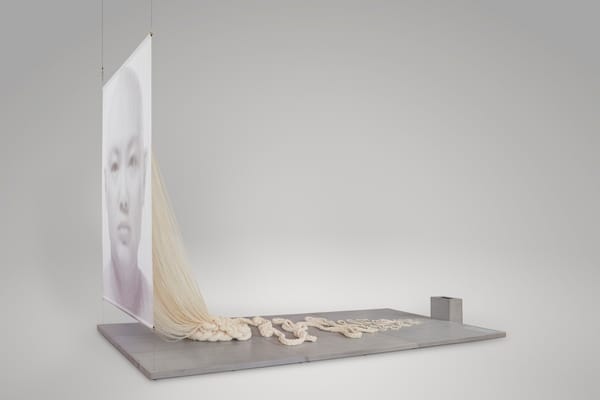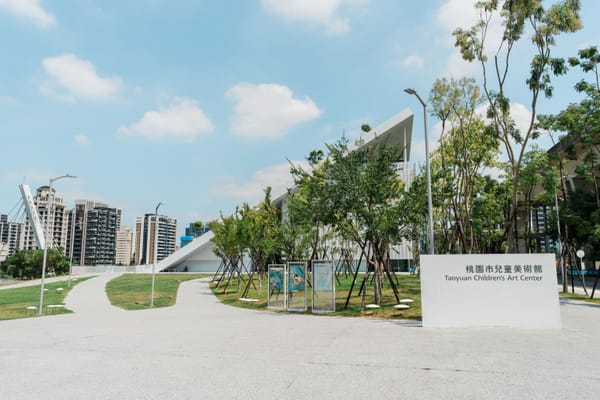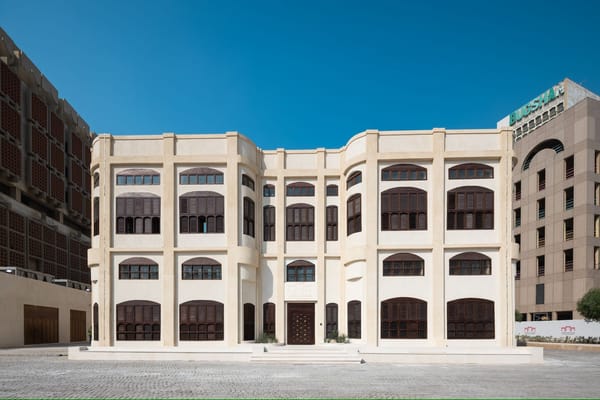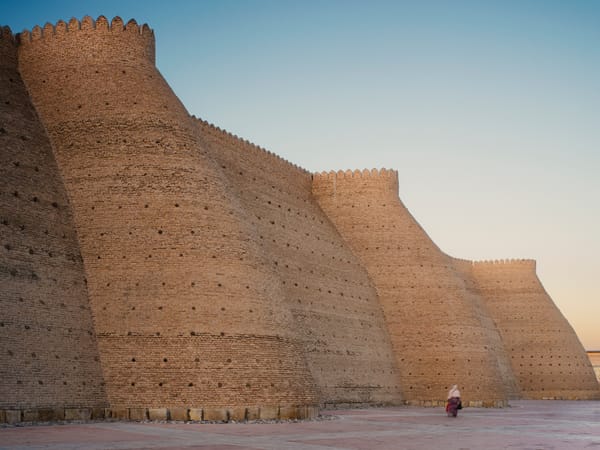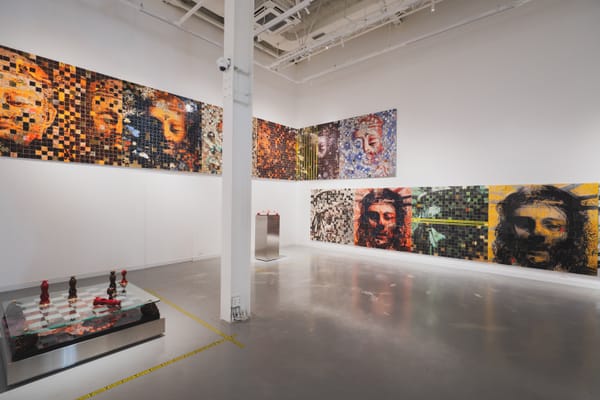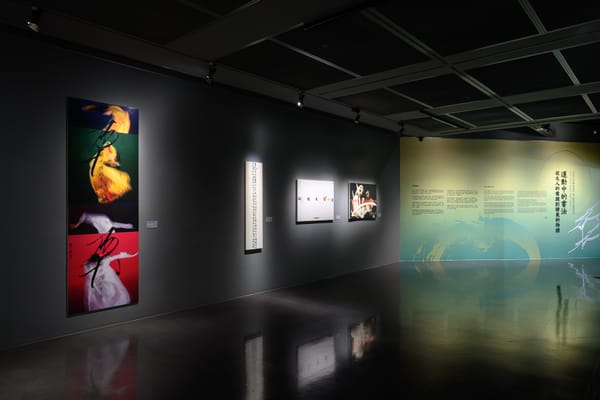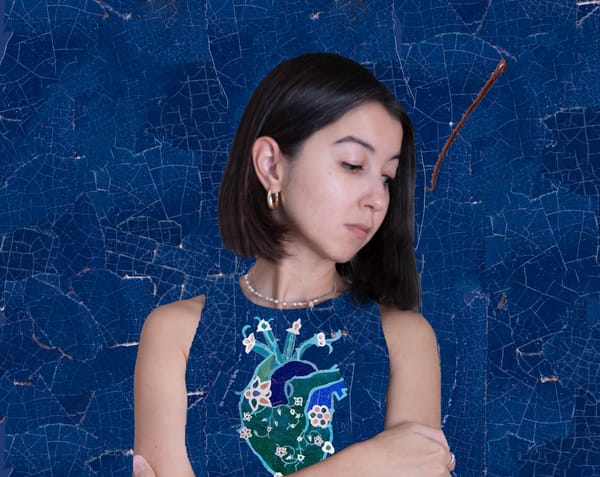Shows
“You, Other; I, Another”
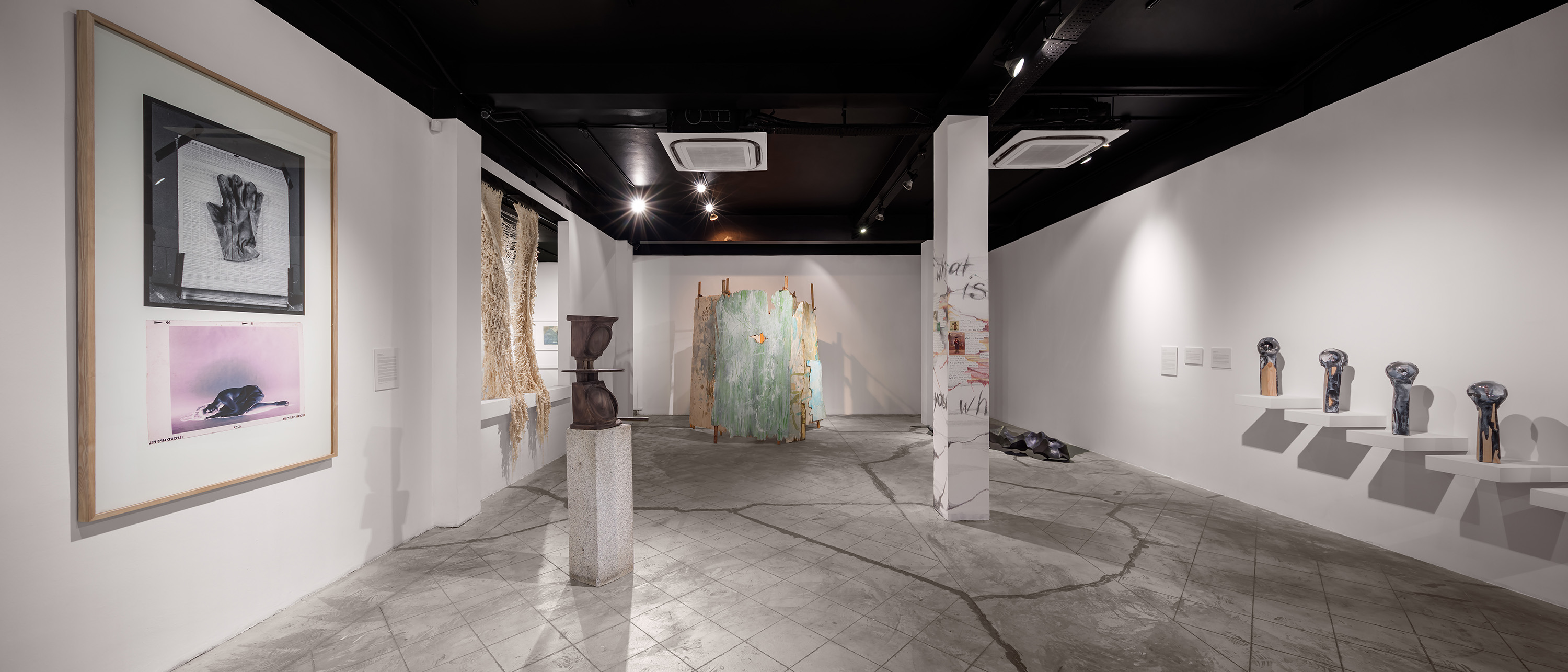

“You, Other; I, Another” is the first exhibition at The Private Museum under its new Guest Curator initiative, curated by the Singapore Art Museum’s former director, Dr. Susie Lingham. Nine emerging and established artists, all but two of whom are Singaporean, were invited to scrutinize the dynamics of “otherness,” tackling notions of duality and divergence both within and beyond “self.”

Indian conceptual artist Mithun Jayaram presented the net-like Approaching a Mending Wall (all works 2018), a wall-sized installation of knotted cotton twine accompanied by eight black-and-white photographs. Jayaram’s practice revolves around the physical act of arduous process; in Mending Wall, this sprawling nexus of woven knots reflects the artist’s complex relationship with his father. Nearby, a row of ambiguous, grainy photos barely reveal illuminated elements of the undertaking itself: scissors, knot, hand, knuckles.
In Eraphya, an assemblage of “leftover debris,” Singapore-based Canadian artist Vincent Twardzik Ching constructs an autobiographical sanctum from discarded remnants of his old works. Viewers gingerly shoulder their way into a circle of rough plywood boards layered in color and pattern: within are carefully placed oddments—machinery, old speakers, a serendipitous painting of an elk calf being bottle-fed—in an eccentric tableau of the artist’s inner landscape. Another self-narrative is Faultlines (or, The Questions You Ask Today Will Be the Questions I Ask Tomorrow) by Regina De Rozario. She appropriates a structural pillar in the gallery and covers it with childhood photos and colorful scribbles of handwriting. This graffitied totem is diverting, but closer study discloses a litany of intrusive questions De Rozario has long fielded about her private life, from “Do you hate men” and “Why don’t you have a Chinese name” to “Who will take care of you”—attempts by others to fix her idiosyncratic identity within a conventional context.
Yeo Chee Kiong reinterprets a Zen parable in Tempted Mind, Shaking Tree, Running Water. His wood sculpture, resembling a burned charcoal husk, languishes on the gallery floor in a “liquefied shadow” of black resin. By injecting this subtle spatial disconnect between the wood and its faux shadow, the artist explores the language of the fable, which debates the perception of materiality. Measure/Measured, a single block of carved wood by sculptor Leroy Sofyan, depicts the mirrored shapes of two weighing scales, one atop the other. Sofyan’s untreated wood possesses a deep grain and implies heft; the binary anatomy of the scales, in unnatural opposition yet in perfect balance, yields a congruent whole.
The oil painting Laparoscopic Wound, No Wider Than 1–2 cm also considers a balance of self versus other. This bland-faced self-portrait by Mumtaz Maricar is an unquiet inversion of certain Baroque paintings where a doubtful Saint Thomas probes Christ’s wounds with his fingers. In her work, Maricar renders visible a questing hand beneath the skin, fingers extruding from a surgical incision. The artist allegorizes the post-operative dissonance she experienced between her own sense of self-possession and the vessel containing it, and ponders how flesh can be both self and other. In Victor Emmanuel’s “Osseous Crystallized” series, the artist pursues that inherent infrastructure which supports living organisms, producing a droll Wunderkammer of fragile skeletal specimens and memento mori. "Osseous Crystallized" comprises five glassy resinous skull-forms, each inhabited by some chitinous morsel of organic detritus (a beetle, a seahorse) that the artist has embedded in crystal arrays, as if in homage.
Artist Susie Wong presented three pencil-and-wash drawings of screen grabs from the 1960 film The World of Suzie Wong. She investigates the plot’s formulaic “Othering of the East” in these works, respectively titled I Can’t Tell, Don’t Leave and How Much I Need You, each pinpointing junctures in the protagonists’ romantic relationship. Wong’s deft hatch-marks evoke screen-static in her astute parsing of exotic-subservient Asian girl vis-a-vis dominant white male. In his renderings of found objects, Singapore photographer Siew Kee Liong interacts directly with the physicality of film itself by abrading emulsion, negatives and paper to impart the organic quality of the medium. In the black-and-white Sessa’s Dream, Siew perpetuates two seemingly disparate narratives in a diptych that couples images of a fractured chess piece and a fatigued, deteriorated portrait.
The persona of “other” was once a reliable metaphor, but its code is unraveling, tending inexorably towards entropy. In works that explore degrees of difference and concepts of self-perception, the nine diverse artists in “You, Other; I, Another” submit that boundaries between an inferred “I” and “other” are redundant. Their recursive processes articulate perception of self as contrived by self; and a recognition of other(ness) as manifested by that same self.
“You, Other; I, Another” is on view at The Private Museum, Singapore, until July 22, 2018.
